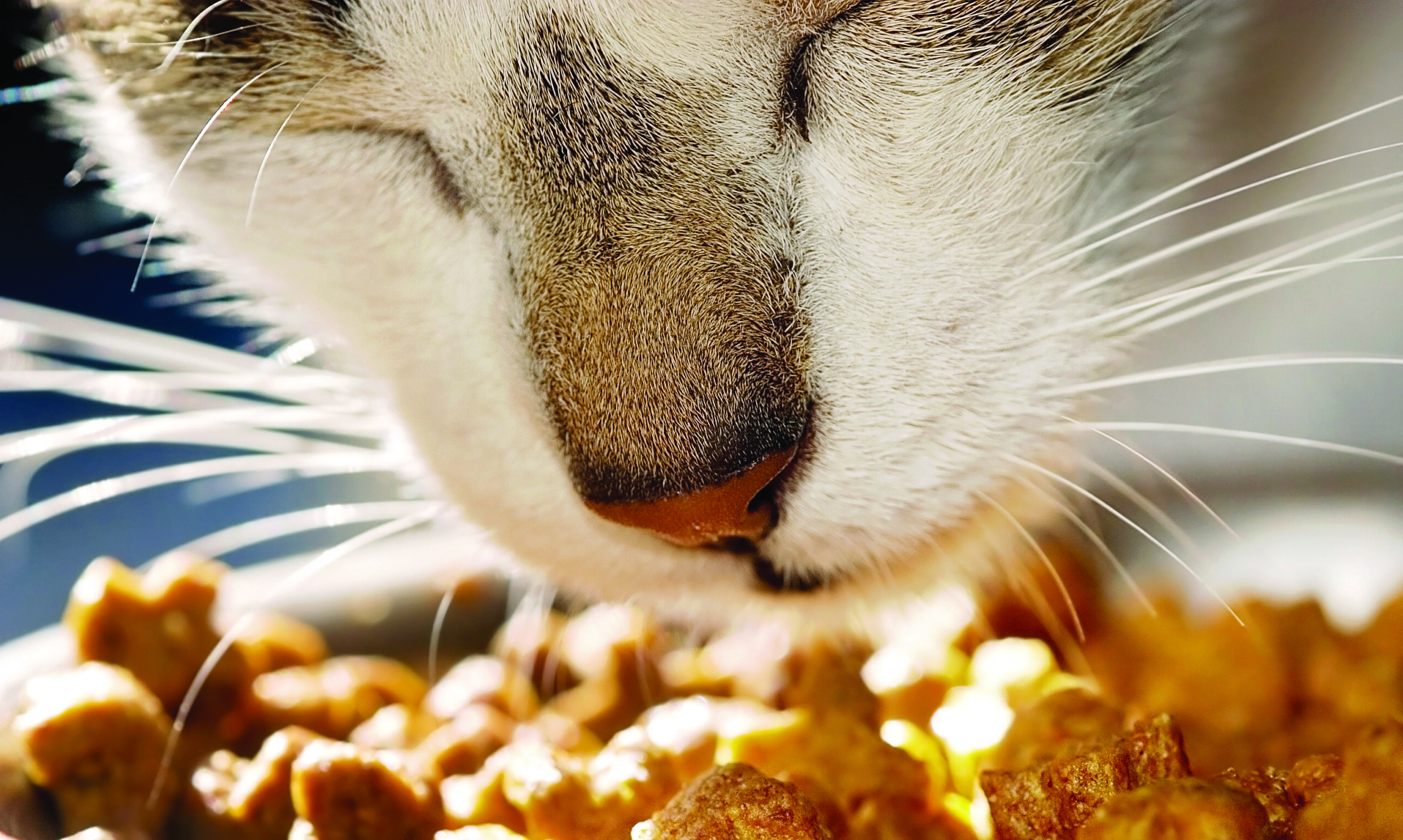
Check out our latest products
Explore the pros and cons of glandulars for feline health — including liver, kidney, and thyroid support.
Are glandular supplements safe for cats? Many tout glandulars for their potential health benefits, including supporting liver, kidney, and thyroid function. In certain cases, they can help heal damaged organs. But they’re not always recommended, so it’s important to understand both the pros and cons of glandular supplements for feline health.
Defining and understanding glandulars
“Glandulars” have a number of definitions, depending on the way they are used. Basically, they are nutritional products with an animal origin rather than a plant, vitamin, mineral or nutraceutical origin. Glandulars usually come from pigs or cattle, but they are mostly used as a way to help people and animals heal.
Did you know? Despite what the name suggests, companies don’t only make glandulars from glands that produce hormones. They also derive them from organs or other body parts, such as the liver, kidney, or muscle.
Veterinarians often base the use of glandulars in cats (and other animals) on these ideas:
- Body parts (such as the liver) have the same basic nutritional building blocks in all mammals, including cats.
- An unhealthy body part (such as the liver) needs all those building blocks to be able to heal completely..
- We don’t know for sure what all those building blocks are. That means we can’t make a perfect pill to naturally heal a body part, even though you see ads for products that claim to do so.
- A piece or extract of that body part from a healthy mammal (such as a pig or cow) provides all the nutrients a sick cat (or other animal) needs to replace anything that is missing or needed in higher amounts.
If toxins or disease severely damage a cat’s organ, it won’t be able to heal, no matter what you try. However, if there’s enough potential for improvement, glandulars can assist in healing, especially if the cat has an increased need for specific nutritional supplements.
Various organs and relevant glandulars
If you take your cat to the vet and a blood test shows elevated liver enzymes, there is something affecting his liver. It might be mild or severe, but either way, the liver could use some help. Most commonly, natural recommendations include supplements like B complex and milk thistle, maybe iron if indicated, and perhaps a Chinese herbal formula.
Vets may not recommend liver as food as often as other treatment options. However, the liver has amazing powers of regeneration, making it sensible to add anything that can help it create new, healthy liver tissue.
The two most common liver glandular products are made from actual liver pieces or liver extracts. These can be used alone or, more commonly, as part of a treatment plan to help the liver recover.
- When chicken or beef liver is used in treatment, you can add small amounts to the cat’s food every day. Alternatively, you may use dried liver as a treat, powder, or in capsule form.
- Liver extracts have been in use since 1896, originally in the form of painful injections. They were used to treat pernicious anemia and liver-related issues. Since then, the use of liver extracts to help treat a number of diseases has been verified by scientific studies. Today, they are usually given in capsule form.
Did you know? When using B vitamins to help the liver, it can be easier to just give the cat liver instead of trying to figure out which B vitamins are important and how much of each is needed.
You can also find liver in the form of a homeopathic dilution. However, using glandulars this way is controversial among classical homeopaths, who follow the “like cures like” principle proposed by Samuel Hahnemann, the founder of homeopathy. Nevertheless, homeopathic dilutions of glandulars are used occasionally
Since the liver is the main detoxifying organ, adding a little liver to a cat’s diet makes sense ‘just in case.’ It is almost always safe, as long as you don’t go overboard. You will usually see recommendations to include liver as part of a natural or homemade diet since wild carnivores regularly consume internal organs in their diet.
Technically, kidneys are a type of glandular. They are also used as part of a natural diet and, like the liver, are among the organs eaten by wild carnivores. Freeze dried kidneys are also available as treats.
However, kidneys can’t regenerate like the liver, so vets don’t often use them in the treatment of kidney disease. Additionally, kidney glandulars do not come in homeopathic form.
In 2022, the FDA ruled that desiccated thyroid is actually a drug that belongs in the “biologic” class of drugs. Companies making desiccated thyroid must go through the long, complicated process of applying for its use as a “new” drug by 2029, or they will no longer be able to sell their products after that time.
Did you know? Hormone-containing glandulars, including thyroid products, must be used with caution and only under the supervision of a veterinarian.
Veterinarians may use a homeopathic version of thyroid glandular, consisting of diluted autolyzed thyroid glands, to treat feline hyperthyroidism, based on the “like cures like” principle. (It’s important to note that classical homeopaths recommend individual remedies that correspond to the patient’s symptom pattern, rather than taking a glandular approach.)
Are glandular supplements safe for cats? Nutritional supplements and herbs usually provide the best approach to balancing a cat’s organs, tissues or glands. However, glandulars have their place in some situations – just be certain to work with an integrative or holistic vet before giving your cat any products.
Glandulars containing hormones can be misused
Cat parents can inadvertently misuse products derived from glands that produce hormomes. Along with thyroid products, hormone-secreting glandulars that have been on the market at one time or another include those for the ovaries, testicles, adrenals, pituitary, and pineal glands.
Giving these glandulars to your cat can cause a hormonal imbalance. For example, the pituitary stimulates other glands, so giving dried pituitary will cause multiple imbalances.
When scientists discovered hormones in the late 1800s and identified the glands that produced them, ground-up glands were the only available treatment for hormone deficiency diseases. At the time, physicians judged their effectiveness by how a patient felt. Today, blood tests show if a cat has an excess or deficiency of a certain hormone.
Consult a veterinarian before giving your cat any hormone-containing glandular. Never attempt a DIY approach to these products. Blood tests are the only way to know whether your cat actually needs a particular hormone and is getting the right amount.
This table outlines the problems that can arise from the misuse of hormone-containing glandulars:
| Glandular | Problem |
| Dessicated thyroid | Hyperthyroidism |
| Dessicated adrenal glands | Cushing’s disease, high blood pressure |
| Pancreas | Not useful for diabetes though helpful for pancreas problem – dangerous if injected |
| Ovares | False heat |
| Testicles | Aggression |
| Pineal gland | Melatonin imbalance |
| Pituitary gland | Excess of most hormones |
Post Views: 92


![[PETHROOM] Cat Nail Clipper Trimmer for Indoor Cats with Circular Cut Hole (2mm) | Premium Sturdy Stainless Steel Blade Cat Claw | Safe, Easy, Accurate, Quiet & Fast | Avoid Overcutting](https://m.media-amazon.com/images/I/6156hi88deL._AC_SL1298_.jpg)
![[PETHROOM] Professional Eye Comb for Pets | Stainless Steel Tear Stain Remover for Cats & Dogs | Gentle Round-Head Grooming Tool | Compact & Portable for Eye Gunk Removal](https://m.media-amazon.com/images/I/71+W758uwXL._SL1500_.jpg)
![[petora] BRUSH ON ME Gentle Facial & Eye Comb for Dogs & Cats | Smooth & Stress-Free Tear Stain Remover | Fine-Tooth Grooming Tool with Rounded Tips | Comfortable Grip for Daily Pet Grooming](https://m.media-amazon.com/images/I/81hzVmjgV1L._SL1500_.jpg)









